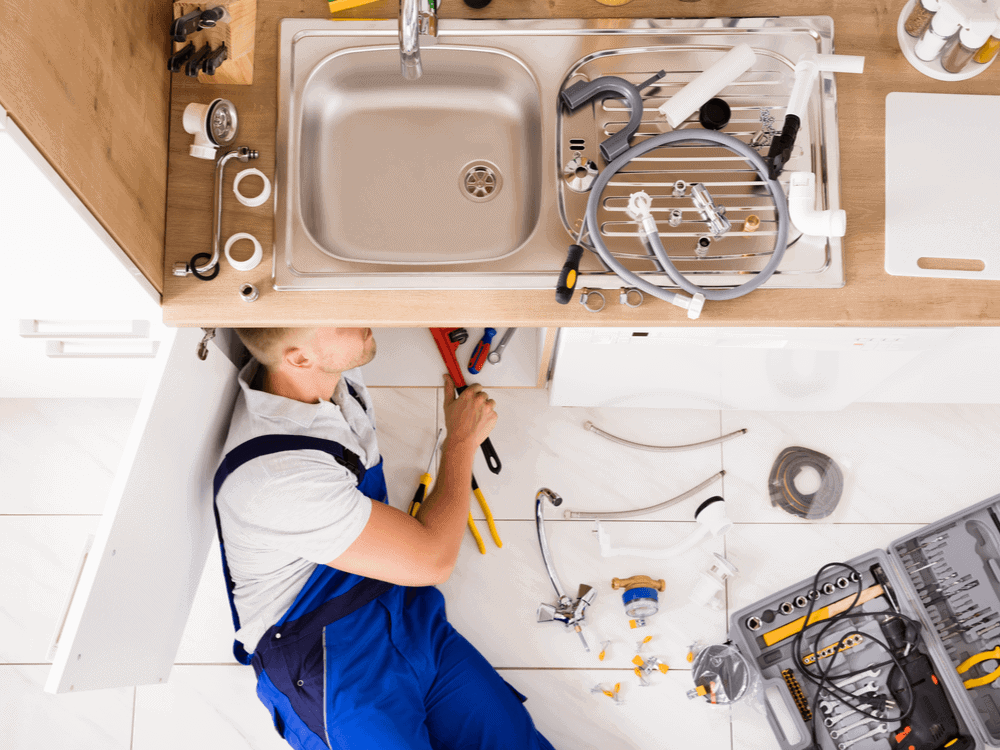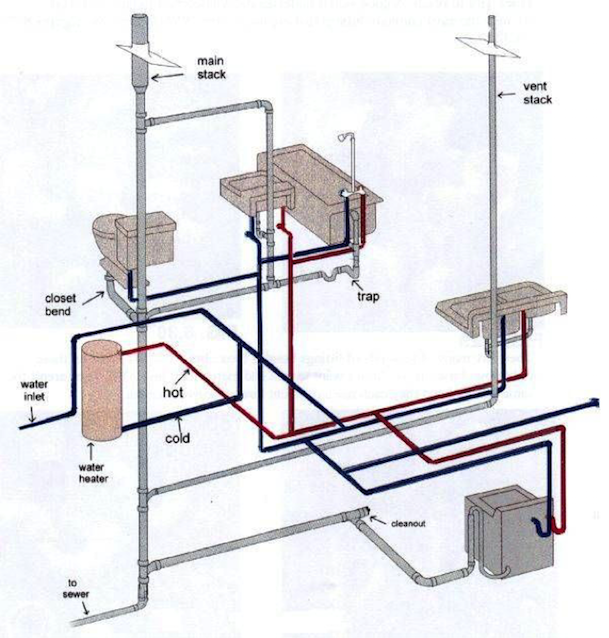Why Your Property's Plumbing System Works: Design
Why Your Property's Plumbing System Works: Design
Blog Article
The writer is making a number of good pointers about Plumbing Installation 101: All You Need to Know in general in this article underneath.

Recognizing exactly how your home's pipes system works is essential for each home owner. From supplying clean water for drinking, food preparation, and bathing to safely getting rid of wastewater, a well-maintained pipes system is essential for your household's wellness and convenience. In this thorough overview, we'll check out the elaborate network that makes up your home's pipes and deal tips on maintenance, upgrades, and managing usual problems.
Intro
Your home's pipes system is greater than simply a network of pipes; it's a complex system that ensures you have access to clean water and effective wastewater elimination. Recognizing its components and how they collaborate can assist you prevent costly repair work and make sure every little thing runs smoothly.
Standard Components of a Pipes System
Pipes and Tubing
At the heart of your pipes system are the pipes and tubing that lug water throughout your home. These can be made of various products such as copper, PVC, or PEX, each with its benefits in terms of sturdiness and cost-effectiveness.
Fixtures: Sinks, Toilets, Showers, and so on.
Components like sinks, toilets, showers, and bath tubs are where water is utilized in your house. Understanding just how these components connect to the plumbing system aids in identifying problems and planning upgrades.
Valves and Shut-off Factors
Shutoffs regulate the circulation of water in your pipes system. Shut-off valves are vital during emergency situations or when you need to make fixings, allowing you to isolate parts of the system without disrupting water flow to the whole residence.
Water System
Main Water Line
The primary water line connects your home to the local water supply or an exclusive well. It's where water enters your home and is dispersed to different fixtures.
Water Meter and Stress Regulator
The water meter actions your water usage, while a stress regulator guarantees that water flows at a secure pressure throughout your home's pipes system, stopping damages to pipelines and components.
Cold Water vs. Hot Water Lines
Understanding the difference in between cold water lines, which supply water directly from the main, and warm water lines, which lug heated water from the water heater, assists in fixing and preparing for upgrades.
Drain System
Drain Pipes and Traps
Drain pipelines bring wastewater away from sinks, showers, and commodes to the sewage system or septic tank. Catches avoid sewage system gases from entering your home and also catch particles that can cause clogs.
Ventilation Pipelines
Air flow pipes permit air right into the water drainage system, protecting against suction that might slow down drainage and create catches to empty. Appropriate ventilation is important for maintaining the integrity of your pipes system.
Significance of Correct Drainage
Ensuring appropriate drain protects against back-ups and water damage. Routinely cleansing drains pipes and preserving traps can protect against expensive repairs and prolong the life of your plumbing system.
Water Heating System
Sorts Of Hot Water Heater
Hot water heater can be tankless or conventional tank-style. Tankless heating units warmth water on demand, while tanks save warmed water for immediate use.
Updating Your Pipes System
Reasons for Upgrading
Upgrading to water-efficient fixtures or replacing old pipelines can improve water high quality, reduce water costs, and increase the worth of your home.
Modern Pipes Technologies and Their Advantages
Check out technologies like clever leak detectors, water-saving commodes, and energy-efficient hot water heater that can conserve cash and decrease ecological impact.
Cost Factors To Consider and ROI
Calculate the upfront costs versus long-term cost savings when taking into consideration plumbing upgrades. Numerous upgrades pay for themselves via decreased utility expenses and less fixings.
Just How Water Heaters Attach to the Pipes System
Recognizing just how hot water heater attach to both the cold water supply and warm water circulation lines aids in identifying problems like not enough warm water or leakages.
Upkeep Tips for Water Heaters
Frequently flushing your water heater to eliminate sediment, checking the temperature settings, and checking for leakages can prolong its life expectancy and enhance energy effectiveness.
Common Plumbing Concerns
Leakages and Their Reasons
Leakages can happen because of aging pipes, loosened installations, or high water stress. Resolving leaks without delay avoids water damages and mold and mildew growth.
Blockages and Blockages
Clogs in drains and bathrooms are often triggered by purging non-flushable things or a buildup of oil and hair. Making use of drain displays and bearing in mind what decreases your drains can avoid clogs.
Indicators of Plumbing Problems to Expect
Low water pressure, slow-moving drains pipes, foul odors, or uncommonly high water bills are indicators of possible plumbing troubles that should be resolved immediately.
Pipes Upkeep Tips
Routine Evaluations and Checks
Set up annual pipes assessments to catch concerns early. Search for indicators of leaks, deterioration, or mineral accumulation in faucets and showerheads.
Do It Yourself Maintenance Tasks
Straightforward tasks like cleansing faucet aerators, looking for toilet leakages making use of color tablets, or insulating exposed pipes in cold environments can avoid major pipes concerns.
When to Call an Expert Plumber
Know when a pipes issue needs professional proficiency. Trying intricate repairs without proper expertise can bring about even more damages and greater fixing costs.
Tips for Lowering Water Usage
Straightforward habits like fixing leaks without delay, taking shorter showers, and running full tons of washing and recipes can conserve water and lower your energy costs.
Eco-Friendly Pipes Options
Take into consideration sustainable plumbing products like bamboo for floor covering, which is durable and environmentally friendly, or recycled glass for counter tops.
Emergency situation Preparedness
Steps to Take Throughout a Plumbing Emergency
Know where your shut-off shutoffs lie and how to switch off the supply of water in case of a ruptured pipeline or significant leak.
Value of Having Emergency Situation Contacts Helpful
Maintain contact information for regional plumbing professionals or emergency situation services readily available for fast feedback throughout a pipes situation.
Environmental Impact and Conservation
Water-Saving Fixtures and Home Appliances
Setting up low-flow taps, showerheads, and commodes can dramatically reduce water usage without sacrificing performance.
DIY Emergency Fixes (When Suitable).
Momentary solutions like making use of air duct tape to spot a dripping pipeline or putting a container under a leaking tap can lessen damages up until a specialist plumber arrives.
Conclusion.
Recognizing the makeup of your home's pipes system encourages you to preserve it successfully, conserving money and time on repair services. By complying with regular maintenance regimens and remaining educated concerning modern-day pipes innovations, you can ensure your plumbing system runs effectively for many years to come.
The Anatomy of Your Home s Plumbing System
Understanding the anatomy of your home s plumbing system is essential for any homeowner. It not only helps in identifying potential issues but also facilitates effective communication with professionals when repairs or upgrades are needed. Your home s plumbing system is more than just pipes and faucets; it s a complex network that ensures the efficient and hygienic flow of water in and out of your house. In this blog, we ll dissect the crucial components of your home s plumbing system. For those in Antelope Valley, Brock Plumbing is your trusted partner for all your plumbing needs, ensuring your system functions smoothly and efficiently.
Water Supply System
Main Water Line: This is where your home s plumbing system begins. The main water line connects your home to the public water supply or a private well. Pipes and Shut-off Valves: Pipes distribute water throughout your home. Shut-off valves are crucial for controlling the flow of water and making repairs without shutting off the entire system. Drainage System
Drain Pipes: These pipes carry waste and water away from sinks, toilets, and showers. Vents: Vents allow sewer gases to escape and help maintain proper pressure in the drainage pipes, ensuring efficient flow of wastewater. Traps: Every fixture has a trap, a U-shaped pipe that holds water and prevents sewer gases from entering your home. The most common is the P-trap under sinks. Fixtures and Appliances
Fixtures and appliances are the most interacted with parts of your plumbing system. They include sinks, toilets, showers, dishwashers, and washing machines. Each fixture and appliance has its own supply and drainage connection, ensuring they receive clean water and can dispose of wastewater effectively.
Water Heating System
Your water heater is a crucial component, providing hot water to various fixtures and appliances in your home. It can be tank-based or tankless, with each type having its own set of advantages and maintenance requirements. Regular maintenance is essential to ensure efficient operation and extend the lifespan of the unit.
Sump Pump
In areas prone to flooding or with high water tables, a sump pump is an essential part of the plumbing system. It s installed in the lowest part of your basement or crawlspace and pumps out water that accumulates, preventing flooding and protecting your home from water damage.
Septic System
Homes that are not connected to a municipal sewer system have a septic system and an underground wastewater treatment structure. Understanding how to maintain your septic system is crucial to prevent backups, odors, and early system failure.
Conclusion
Your home s plumbing system is a complex and essential network, ensuring the efficient and hygienic flow of water in and out of your property. Understanding its key components helps in maintaining it properly and identifying issues before they escalate into major problems. For residents in Antelope Valley, Brock Plumbing is dedicated to providing top-notch services, ensuring that every part of your plumbing system is in perfect working order. Trust our team of professionals to handle all your plumbing needs, ensuring your home remains comfortable, safe, and well-maintained.
https://brockplumbinganddrains.com/blog/the-anatomy-of-your-homes-plumbing-system/

Hopefully you enjoyed reading our excerpt about . Thanks for finding the time to read through our piece. Remember to pause to share this write-up if you liked it. I value your readership.
Browse Website Report this page